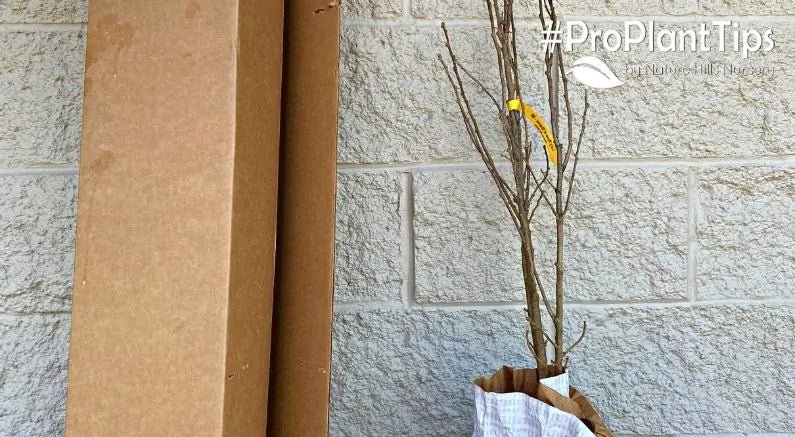We’ve said it once and we’ll say it again, bareroot plants rock! We could rave about them all day and if you want to learn a little bit more about all the reasons you should buy bareroot, check out our blog on the topic!
Now, maybe you’ve already bought a bareroot and are wondering what you’ve gotten yourself into. No worries, we’ll walk you through what to expect when your bareroot arrives.
First things first, keep in mind our bareroot deliveries start in early spring and continue into the middle part of June. So you may be receiving plants that have no leaves on them even though the plants in your yard are leafed out and growing. This is totally normal!
Nurseries have been growing bareroot for generations...and the whole idea of digging plants without any soil, and holding those plants dormant in our coolers is still a very commonly used practice for growers.
Bareroot plants ship easily and the beauty is the root systems are not growing in circles. Plant roots that start growing in circles will often continue to do so once planted back into the ground and can cause root girdling down the road. That does not happen with bare-root plants.
How will Bareroots be delivered?
Bareroot plants are dormant coming from our coolers that are 35 degrees, and the plants still think it is winter. This means they’ll look like any outdoor plant in the winter, asleep and leafless. Once the tree or shrub is planted in the warm soil, it’ll start leafing out fairly quickly and after a month or two, it’ll look as lively as the rest of the plants in your garden!

After receiving the box, follow these steps for planting success:
- Find a shady spot to keep the box while getting scissors, shears and a bucket of water ready
- Carefully unbox the plant and remove the wrapping. If you bought more than one, they may be tied together. Should this be the case, go ahead and separate them.
- Check the plant. It’s normal for there to be dried leaves and limited branching. It’ll have plenty of leaves soon!
- Snip off broken branch tips. Once it’s planted, new growths will be produced at the fresh cut
- Soak the roots in water. Ideally, let it soak overnight but anywhere from 1 to 24 hours will work well.
- Prepare the planting hole. Choose the site carefully so the plant gets the correct amount of sunlight and the right soil type. Check out the plant facts on our site and follow the Planting Guide when situating it in its new home.
How to Plant Bareroot Shrubs & Trees
Planting is a piece of cake and you won’t have to worry about hauling around heavy containers of soil. Bareroots are light and very transportable. After unboxing, soaking and picking a spot:
- Pick the location. If you haven’t already, check around your landscape and pick a spot that gets the right amount of sunlight for your plant and has the right soil type. Most plants prefer well drained soil.
- Dig the hole. Check the bottom of the plant for the slight change in color above the roots which shows how deep to plant it. Dig the hole that deep and twice as wide as the roots extend
- Plant it. Add the plant to the hole with the roots down. Cover the roots and fill the hole, making sure not to plant any deeper than the soil line.
- Water well and mulch. Soak the soil all around the plant and cover with a thick layer of mulch. 3-4 inches should do it but keep the mulch away from the actual base of the plant.
- Give your new addition plenty of TLC. Keep a regular watering schedule to let the plant establish during its first year.
Don’t let the initial look of bareroot plants scare you off. They may take a bit of patience, but the end results 6-8 weeks later are healthy plants at an excellent value.
Still not sure, watch our video on unboxing a bareroot Lucy Rose of Sharon to get a better idea of what a bareroot shrub looks like out of the box.
Happy Planting!

